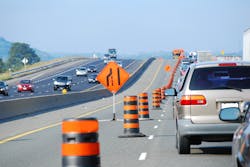Indianapolis Revises 10-year-old Road Design Policy
Ten years ago, Indianapolis' Complete Streets ordinance got national praise in 2012, but drifted into the background after a while. The idea behind Complete Streets was simple: approach street design with all travelers in mind by incorporating elements like bike lanes and walking paths into street projects.
It was safety, again, that prompted the councilors to take another look at the policy this year with a critical eye, following the community response to the death of a well-known cyclist on 86th Street in Indianapolis.
The city council adopted a new policy that revised the original ordinance, and gets more specific, including an expanded emphasis on transparency and equity.
It says the policy applies not just to city projects and private developers, but to projects undertaken by virtually everyone else, from public utilities to individuals. It adds new performance metrics that the city must report publicly, including the percentage of Complete Streets projects that are within half a mile of a school and the percentage located in underserved neighborhoods.
A new section of the ordinance describes how those performance metrics, as well as any exceptions to the policy, should be reported on the city's website.
A main critique from advocates has been the shortage of publicly accessible documentation of the policy's successes and exceptions. To date, the public reporting on how many bike lanes, sidewalks, accessible curb ramps, and more have come out of the Complete Streets policy has been limited to quarterly reports that give no sense of overlap.
The department says engineers put all city projects through the Complete Streets design process, without exception.
The revised policy takes a meaningful step forward in requiring transparency and documentation of how dollars are spent with regard to Complete Streets.
The renewed look comes as pedestrian deaths on Indianapolis streets have taken a turn for the worse.
Nearly 150 pedestrians have died from car crashes in the last five years, compared to about 100 the previous five years and 80 the five years before that.
Advocates point to a variety of approaches to curb the problem, from better street design to more education about road safety to laws that allow automated enforcement.
In the last 10 years, the city has built 100 miles of bike lanes, 43 miles of new or rehabilitated trails, 1 million linear feet of sidewalks, and more than 3,000 new or rehabilitated crosswalks.
In the last five years, the department has shifted infrastructure dollars away from surface treatments and toward total street reconstruction, away from road widening to road "diets." But the city operates with a massive spending gap on infrastructure, as the money available doesn't begin to cover the basic needs of its uniquely sprawled network.
---------------
Source: Indystar.com
